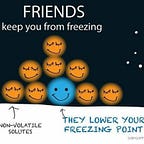Content Marketing Mental Models.
A mental model is used to break any complex idea into simpler, well organised and easy to digest chunks. It is an illustration of how something works. The Content Marketing Institute describes it as frameworks that help people interpret how things work in the world.
Types of Content Marketing Mental Models
Mental Model 1: A map is not the Territory.
This model was introduced by Alfred Korzyboski, in a 1931 paper. The theory is a simple way we choose to interpret a particular set of information.
Application:
- Do not mistake personas for people. Rather, they are just sketches of a cluster of characteristics of people in your target audience.
- They generalise the goals and behaviours of your desired audience.
- When your strategy fails, think deeper and consult your customers.
Mental Model 2: MAYA (Most Advanced Yet Acceptable)
Coined by Raymond Loewy, an industrial designer. This mental model means that consumers are torn between two opposing choices; Neophilia (the curiosity about new things) and Neophobia (the fear of anything new). It is a framework designed to help you sell ideas.
Application:
- You tend to stand out with the right amount of “New”.
- Look for ways to inject a bit of surprise in well-trodden paths.
Mental Model 3: The Second Order Thinking
This model can help you differentiate your content from your competitors and produce better results for your business. It also prompts you to look beyond the obvious to come up with better answers.
1st Order Thinking
- Go after keywords with high search volumes
- Send templatized outreach E-mails to acquire backlinks
2nd Order Thinking
- Prioritize topics that are relevant to your audience and your business goals.
- Create an asset that companies link to.
Mental Model 4: The Circle of Competence.
This model is embraced by the likes of Warren Buffet and Charlie Munger. It encourages you to mostly operate within your ‘circle of competence’ (i.e. your current set of skills). Ensure you work constantly to expand that circle.
Application
- Useful in the context of your content marketing career
- You will succeed far more often while operating within your circle of competence, but work to slowly enhance its boundaries.
- You advance in your career as your circle grows .
- Master skills once at a time.
- Trying new things, learning, iterating and trying again is how you expand the circle.
Mental Model 5: Strategies vs Tactics
Strategy: A guiding principle that helps you achieve an outcome over the long term. Strategies should not change very often.
Tactics: This is a small action item that helps you get closer to the desired outcome. It can change as often as needed.
Application
- A good strategy is simple and unsexy.
- Good strategies can replace unreliable tactics.
- If you can replace a hit-or-miss tactics with a reliable strategy, you’ll be able to better allocate your time to valuable work.
- Thinking and acting strategically is one of the best ways to accelerate your work and your career.
Mental Model 6: First Principle Thinking:
This mental model seeks to reduce a proposition to the most basic assumptions that doesn’t rely on any other assumptions. Rather than rely on conventional wisdom to inform your logic, distill something to its fundamental truths-aka- ``first principles``
Why It Matters
- Most content marketers love the tips and tricks, the cheats and hacks, the gurus and the get-there-quick schemes.
- They obsess over gaining the system and loud the new trends.
- In most cases, focusing on the fundamentals is what drivers results in the long run.
Content Marketing Principles.
- Understand your audience.
- 2. Find the right channel.
3. Have a documented content strategy.
4. User-first mentality.
5. Understand the business goals.
6. Create once distribute forever.
